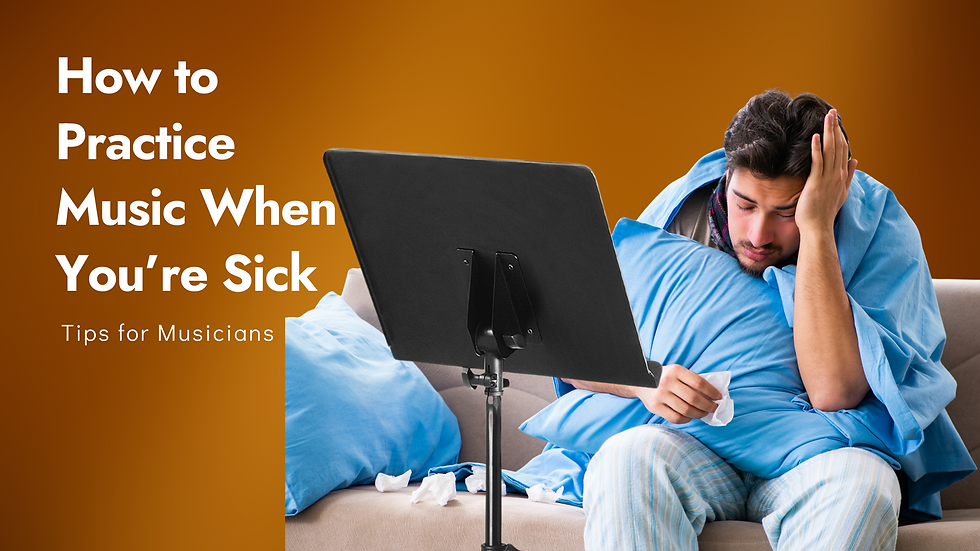How to Choose Your First Guitar: Tips for Beginners
- Taylor Fends

- May 15, 2025
- 3 min read

Getting your first guitar is an exciting step—but with so much information and so many choices out there, it can also feel overwhelming. Don’t worry! Whether you're brand new to music or just exploring guitar as a hobby, this guide will break things down to help you confidently pick the right instrument to start your journey.
Start Simple: Don’t Overthink It
When you're just starting out, you’re learning the basics—chords, simple riffs, and note positions. You don’t need the perfect or priciest guitar to do that. In fact, most new players don’t stick with it past six months, so it’s smart to start with something affordable and reliable.
The key is to get a guitar that makes you want to pick it up and play every day. If it feels good in your hands and looks cool enough to keep your interest, that's already a win.
Should You Go Electric or Acoustic for your first guitar?
Evan recommends starting with an electric guitar, and here’s why:
Easier to play: Electric guitars usually have lighter, thinner strings that are easier on your fingers.
More versatile sounds: With a basic amp and effects like reverb or delay, you can explore all kinds of tones.
More fun: Let’s be honest—cranking up an amp makes practice more exciting!
Only start with an acoustic if you're strictly playing acoustic-based styles like folk or unplugged singer-songwriter tunes.

What Do You Need to Start?
If you’re going the electric route, here’s your basic gear checklist:
Electric guitar
Guitar picks
Strap
Amplifier
Instrument cable
Tuner (a phone app is fine!)
A starter amp with a few simple effects can add a lot of fun to your practice routine.
Trusted Guitar Brands to Look For
That ultra-cheap guitar on Amazon? It’s probably not your best bet.
Instead, stick with reliable brands known for quality—even their budget models are a solid place to begin. Here are a few:
Fender
Epiphone
Yamaha
Ibanez
Squier (by Fender)
Jackson
Schecter
Paul Reed Smith (PRS)
ESP
Gretsch
You can usually find beginner models from these brands in the $200–$250 range, with a decent practice amp running another $50–$100.
New vs. Used: What’s the Deal?
Buying used can save money, but only if you’re careful:
From a shop: Safe bet—they’ve usually tested it and will disclose any issues.
Online marketplaces like Craigslist or Facebook Marketplace: Risky if you don’t know what to look for. Internal electronics or neck alignment problems might not be obvious.
When in doubt, buy from a reputable music store—online or in-person.

What If You’re Buying for a Kid?
Guitars come in different sizes for a reason. Buying a guitar that’s too big for a child can be frustrating and discourage them from playing. Here’s a general guideline:
Half-size: Ages 5–7
Three-quarter size: Ages 8–11
Full size: Ages 12+
Try a few out in-store if you’re unsure about what fits best.

Try Before You Buy
If possible, go into a music store and test guitars in person:
See how the body shape feels in your lap.
Make sure it’s not too heavy.
Test if you can comfortably reach the frets.
Local music shops with great reviews are especially worth checking out. They may offer better service and prices than big chains and can guide you through the process with more personal attention.

Don’t Skip the Setup
Even a great guitar can play poorly if it hasn’t been set up right. Many new guitars need:
Neck alignment
Bridge adjustment
String height/fret tweaks
Some shops include this service with purchase, but if not, it's worth paying a little extra to have a professional set it up so it plays its best.

Final Thoughts
Finding your first guitar doesn’t have to be complicated. Focus on affordability, comfort, and reputable brands. Skip the fancy features—for now. Once you know you’re sticking with it, then it’s time to shop for your “perfect fit” upgrade.
Want to learn about that next step? Check out Evan’s follow-up video on selecting your second, more specialized guitar—coming soon on Musician’s Addition.
Until then, have fun, keep strumming, and enjoy the ride!








Comments